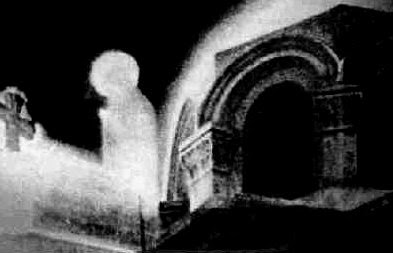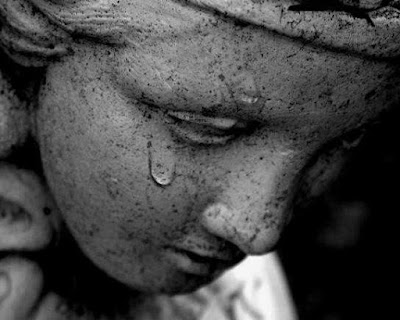8 religious phenomenon in historical mysteries - World Mysteries
1.The Mystery of Shroud of Turin
 |
The Mystery of Shroud of Turin |
The Shroud of Turin or Turin Shroud (Italian: Sindone di Torino, Sacra Sindone [ˈsaːkra ˈsindone] or Santa Sindone) is a length of linen cloth bearing the image of a man that is believed by some Christians to be the burial shroud of Jesus of Nazareth. Three radiocarbon dating tests in 1988 have concluded that the age of the cloth only goes back to the Middle Ages.The shroud is kept in the royal chapel of the Cathedral of Saint John the Baptist in Turin, northern Italy.
 |
The Mystery of Shroud of Turin |
The shroud is respected by many Christians of several traditions, including Catholics and Protestants. The Catholic Church has neither formally endorsed nor rejected the shroud, but in 1958 Pope Pius XII approved of the image in association with the devotion to the Holy Face of Jesus. More recently, Pope Francis and his predecessor Pope Benedict XVI have both described the Shroud of Turin as "an icon" and Pope John Paul II called the Shroud "a mirror of the Gospel".
2.The body of saint Bernadette Soubirous of lourdes
On April 16, 1879, Bernadette—or Sister Marie-Bernard, as she was known within her order—died in the Sainte Croix (Holy Cross) Infirmary of the Convent of Saint-Gildard. She was thirty-five.
 |
The body of saint Bernadette Soubirous of lourdes |
Very fine wax masks were laid over the face and hands of St. Bernadette's body in 1925 to disguise the sunken eyes and nose and the blackish tinge to the face and hands. During the first exhumation (1909) the face had been "a dull white" and the hands "perfectly preserved" but the nose was already "dilated and shrunken". The eyes were not noted as having yet sunk. She died on April 16, 1879. Her body has not been embalmed or specially treated in any way.
3.Zeitoun Virgin Mary Sighting - The Blessed Virgin Mary
 |
Zeitoun Virgin Mary Sighting - The Blessed Virgin Mary |
In 1968, while Americans were watching the Chicago riots at the Democratic Convention or live broadcasts from the Vietnam war, millions of Egyptians tuned in to broadcasts of a miraculous apparition of the Virgin Mary at a church in the town of Zeitoun, a suburb of Cairo. The amazing thing is that they were first spotted April 2 by a Muslim laborer named Atwa. He noticed someone walking on the dome of the Coptic orthodox church and said he first thought it was someone who was going to jump. He yelled at them to wait, then alerted passersby and fellow crewmen. Well, they all found out it wasn't just some woman. The apparitions lasted for 3 years and were broadcast by Egyptian TV, photographed by many professional photographers and also personally witnessed by Egyptian President Abdul Nasser. Over 1,000,000 people saw the manifestations, with sometimes as many as 200,000 people there at the same time. They all watched Mary pacing the roof and raising her hands in blessing - her robes being seen to move as the wind would blow. Dove-like objects would also appear with or around her and would move without flapping their wings, sometimes forming geometric shapes. The apparitions were believed to be responsible for numerous unaccountable healings, one which happened to be the finger of Atwa, which was full of gangrene and scheduled to be removed the day after he sighted the vision. Local seismic activity was 10 times greater than normal ...could this have had something to do with it or was it the other way around? Local legend said that the church had been built in 1918 by a man named Khalil, who said the Blessed Virgin came to him in a dream and asked him to build it. If he did, she said she would return in 50 years to bless it.
4.Statue cries human tears - Weeping statue
A weeping statue is a statue which has been claimed to be shedding tears or weeping by supernatural means. Statues weeping tears of a substance which appears to be blood, oil, and scented liquids have all been reported. Other claimed phenomena are sometimes associated with weeping statues such as miraculous healing, the formation of figures in the tear lines, and the scent of roses. These events are generally reported by some Christians, and initially attract some pilgrims, but are in most cases disallowed by the upper levels of the Church or proven as hoaxes.
 |
Statue cries human tears - Weeping statue |
Reported weeping statues are most often of the Virgin Mary and are at times accompanied by claims of Marian apparitions. However, to date only one single example of a combined weeping statue and apparition (namely Our Lady of Akita) has been approved by the Vatican and the rest have usually been dismissed as hoaxes. An unusual nature of the Our Lady of Akita apparitions was that unlike other cases the entire nation of Japan was able to view the tears of the statue of the Virgin Mary on national television.
5.Saint Padre Pio, The priest with the stigmata
On June 16, 2002, Pope John Paul II canonized in Rome Padre Pio of Pietrelcina, one of the greatest saints of all times. There are saints who have been known for healing; there are saints who could "read" souls; there are saints who were known for levitation; there were saints who bore the stigmata, or were seen in apparition, or who had the “odor of sanctity.” There are saints who could understand languages they didn't know. But Padre Pio of Pietrelcina, who died on September 23, 1968, had all these charisms, and more. In fact, not since St. Francis of Assisi has there been such a miracle-worker.
 |
Saint Padre Pio, The priest with the stigmata |
And as a matter of fact, Padre Pio was the first priest to bear the stigmata — the holy wounds of Christ — just like St. Francis of Assisi. Saint Pio is a man who healed literally thousands — while he was still alive; who could read souls — knowing in case after case exactly what a person in Confession had done; who was seen in dozens of cases in bilocation (appearing far from where he actually was). There were accounts that defy the belief of even the most ardent believer: a sighting of him at the Vatican, even though he never left the San Giovanni monastery; the transfiguration of his face into that of Jesus' during the Consecration; a worker named Giovanni Savino who lost an eye that later materialized under the bandages after Pio visited him in bilocation.
6.Supernatural - Saints Joseph of Cupertino and levitation
 |
Supernatural - Saints Joseph of Cupertino and levitation |
There are numerous saints to whom the ability to fly or levitate has been attributed. Most of these "flying saints" are mentioned as such in literature and sources associated with them.
The ability to levitate was attributed to figures in Early Christianity. The apocryphal Acts of Peter gives a legendary tale of Simon Magus' death. Simon is performing magic in the Roman Forum, and in order to prove himself to be a god, he flies up into the air. The apostle Peter prays to God to stop his flying, and he stops mid-air and falls, breaking his legs, whereupon the crowd, previously non-hostile, stones him to death.
7.Blood Miracle of St Januarius - God vial of blood
The liquefaction (becoming liquid) of the blood of St Januarius (Gennaro) is an extraordinary miracle of the Church that has been occurring up to 18 times each year for the past 600 years. It is only one of a number of blood miracles that have taken place, and in the case of St Januarius-Gennaro and others, are still taking place with blood that was collected soon after the death of certain martyrs. There is a well-documented history of these samples of blood liquefying at various times of the year, especially on the Saints' feast days.
This practice of gathering blood for relics, admittedly a somewhat surprising religious practice, nevertheless was a common practice beginning in the days of persecution when the early Christians soaked cloths in the blood shed by martyrs or, if possible, actually collected the liquid in flasks to keep as devotional items. In the catacombs these flasks were buried with the dead, their discovery indicating that the person had died a martyr. Throughout the centuries, blood has been collected from holy persons recently deceased, especially martyrs for the faith, with the specimens being carefully kept with devotion and veneration. These samples have been known to liquefy under various circumstances, at different seasons of the year, in various countries and in varied ways. Many samples still display wonderful reactions in our day, one of which, that of St Januarius we will here consider.
8.Apocalypse in Medjugorje - Our Lady of Medjugorje - It's the apocalypse
The Blessed Mother has been appearing in the former Yugoslavia since 1981.
There have been many miracles there of people miraculously healed, rosaries turning to gold, hardened sinners being converted and people seeing and photographing signs. This is an incredible article about a man who went into a trance and started to cry blood before Our Lady’s statue and it has a link to another account of a paralytic given the grace to walk.
8 religious phenomenon in historical mysteries - World Mysteries
 Reviewed by Unknown
on
08:22
Rating:
Reviewed by Unknown
on
08:22
Rating:
 Reviewed by Unknown
on
08:22
Rating:
Reviewed by Unknown
on
08:22
Rating:




Không có nhận xét nào: